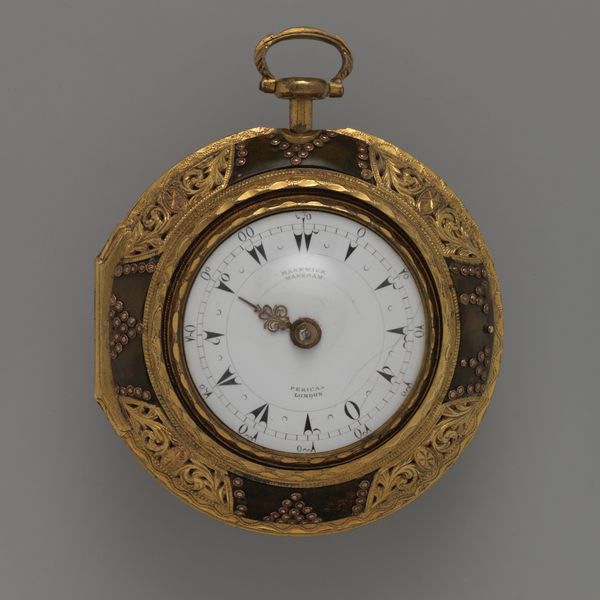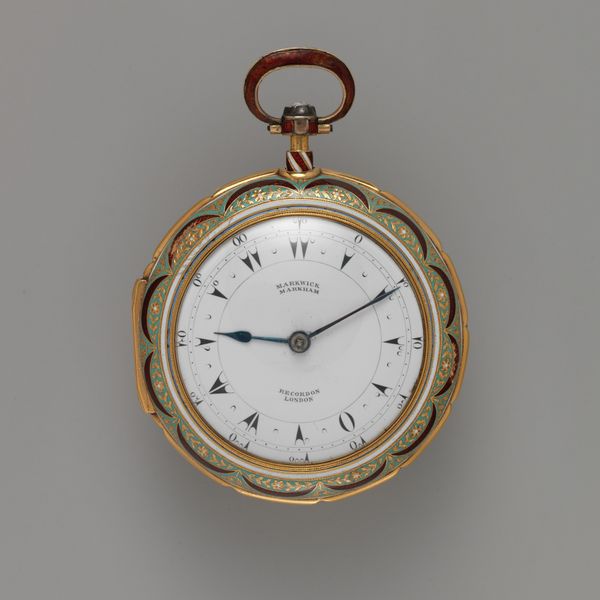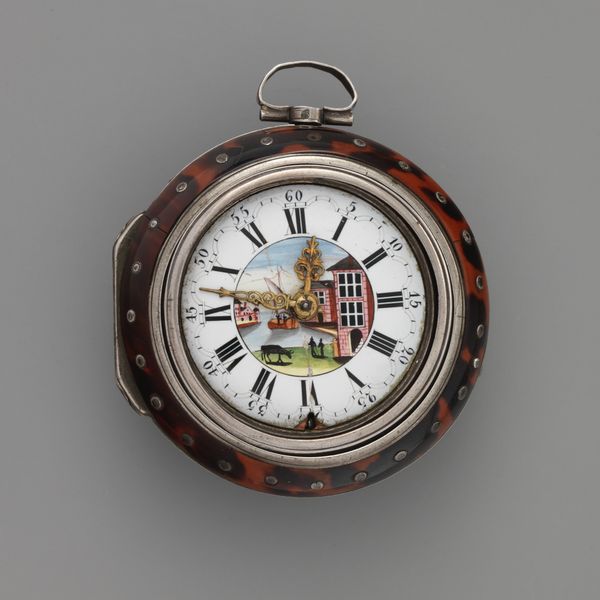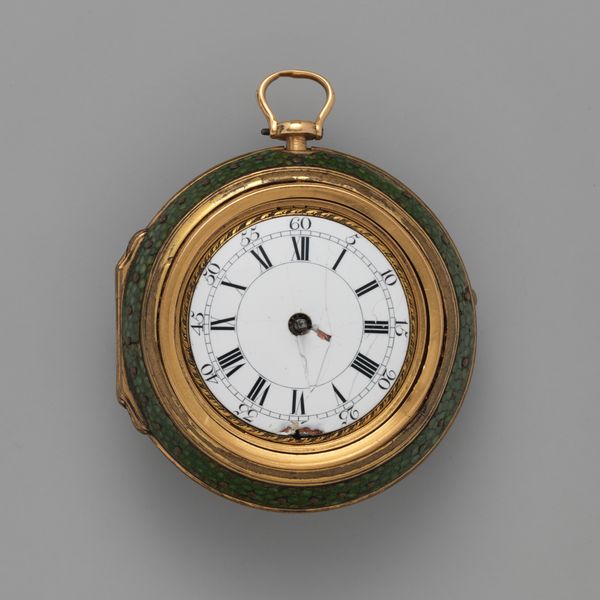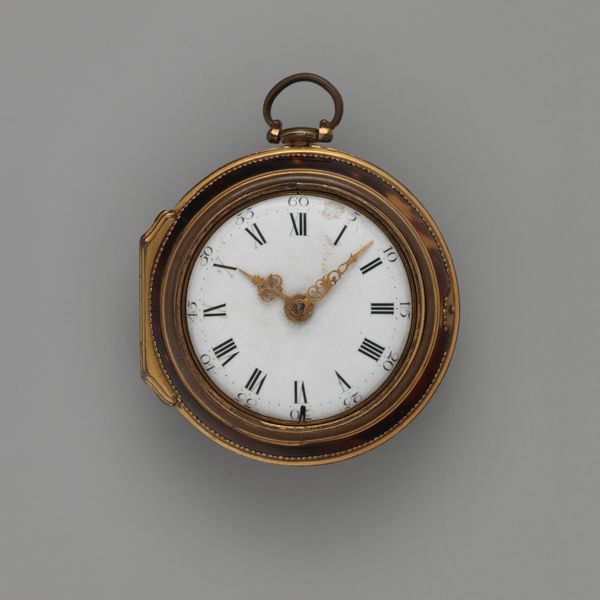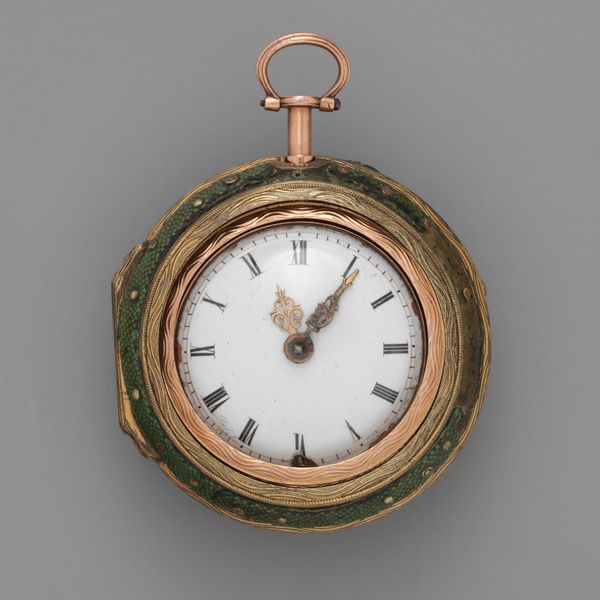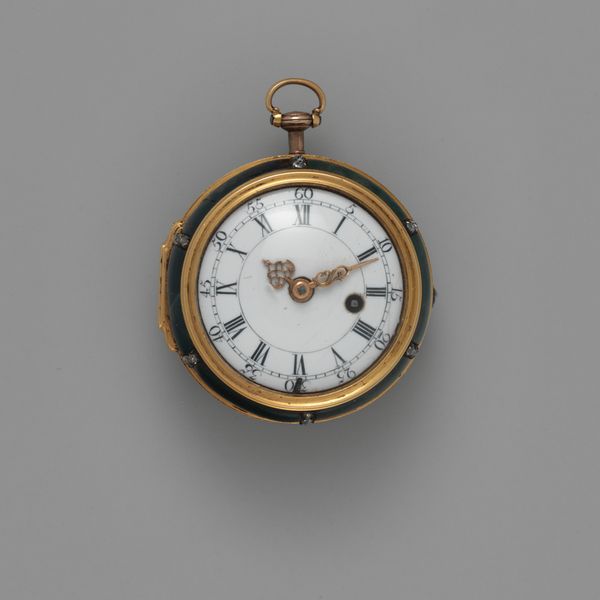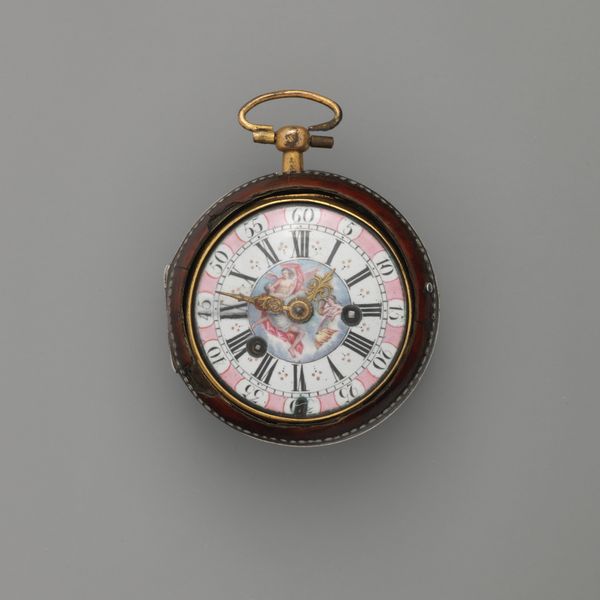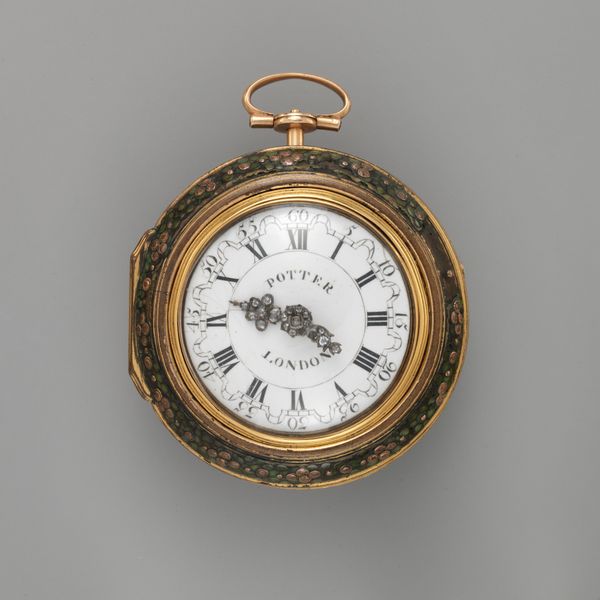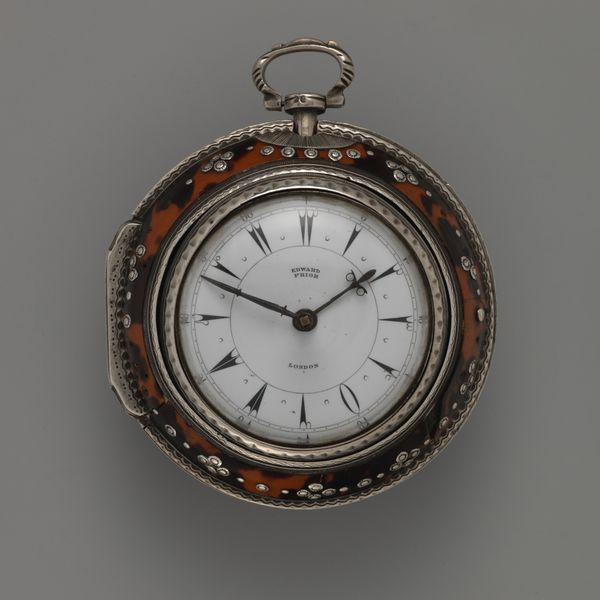
metal, gold, ceramic, sculpture
#
baroque
#
metal
#
gold
#
ceramic
#
sculpture
#
decorative-art
Dimensions: Diameter: 4 3/4 in. (12.1 cm)
Copyright: Public Domain
Curator: What strikes me immediately about this piece is its ornate quality and small size. Editor: I’m ready to delve deeper into this particular object: Clock-watch, made sometime between 1735 and 1765. It’s currently housed at the Metropolitan Museum of Art. Attributed to the Firm of Marwick, Markham and Recordon, this timepiece utilizes gold, metal and ceramic. It has elements of Baroque design that are considered decorative art. Curator: Baroque, yes, the floral border practically shouts it, doesn’t it? I wonder what time, no pun intended, in history that form took on an existence of practicality rather than of mere display. What's striking is the tension between the precision demanded by timekeeping and the elaborate, almost frivolous decoration. The flowers seem almost to be mocking the clock's function. Editor: Absolutely. The floral patterns surrounding the clock face indicate a preoccupation with aesthetics, but this also occurred within a society marked by distinct social hierarchies. Think about how owning an extravagant clock was symbolic, speaking to gender, wealth, status, and power. These aren't merely pretty things but carefully constructed objects of cultural projection. Curator: Interesting. Focusing purely on form for a moment, notice the stark contrast between the white ceramic face and the heavily ornamented gold center and casing. Semiotically, that contrast acts to communicate some sort of balance. Perhaps between usefulness and aesthetic intent? Editor: Considering it was the mid-18th century, it's very likely this was crafted during a time of vast trade across empires and nations, reflecting colonial exploits. For whom and for what was this excess meant? Was this object crafted in celebration of power? Was the measurement of time being reframed in relation to empire? Curator: It also strikes me that time, once the realm of sundials and church bells, became personalized and portable with these pocket watches. Editor: Precisely, time literally became property and those with social power dictated it. Thinking through that lens gives us a great overview of this intricate object. Curator: I see the watch as a sort of microcosm, perfectly mirroring the intricacies of the universe while still offering legibility in the face of complexity. Editor: Well said. Ultimately, viewing decorative pieces from this period moves beyond the individual object, requiring us to ask crucial questions about production and meaning.
Comments
No comments
Be the first to comment and join the conversation on the ultimate creative platform.
